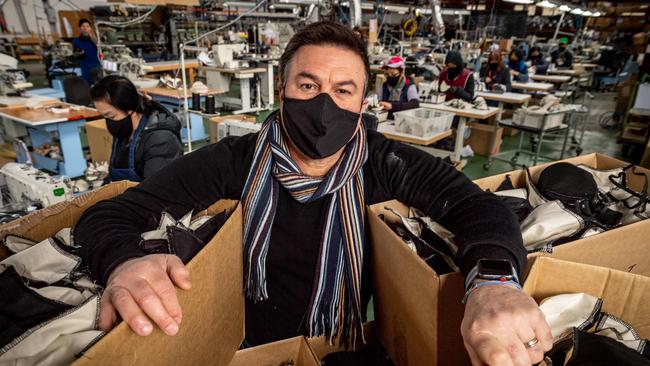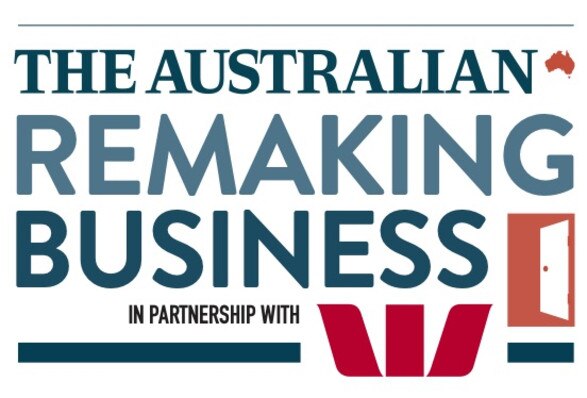Retail banking on Black Friday to stay out of the red
While online shopping is through the roof, bricks and mortar retailers are struggling. Prepare for hefty sales as businesses try to offload stock.

Australian retailers are said to be gearing up for a larger than normal Black Friday shopping sale at the end of November, as the struggling industry looks to shift unsold stock that has built up through the pandemic.
John Condilis, managing director of Nobody Denim, which stocks independent boutiques as well as big department store chains such as David Jones, said that no one in retail was talking about Christmas this year, traditionally one of the busiest trading periods for the sector. Instead, businesses were focused on the big sales weekend that is still more than two months away.
“For the next few months we are all in survival mode,” the Melbourne-based executive said on the Remaking Business Webinar.
“Cash is king, as everyone says, so it’s a matter of just ensuring that the stock levels are dropping. I think (Black Friday) is going to be a big, big sales moment.”
Condilis, whose manufacturing operations ground to a halt during stage four lockdowns in Victoria to contain a second outbreak of COVID-19, said retailers were all shifting in the way that they do business and were just focused on surviving 2020. Fortunately, they have managed to secure a contract manufacturing personal protective equipment (PPE) to help keep staff employed.
“Every 10 years something does happen and here we are again,” said Condilis, who has been in the rag trade for more than 30 years.
“But this is the worst that I have ever seen it when you know that you’re pretty much shut down from the rest of the world.
“There is a huge unknown out there and we’re just talking about surviving (and) how we manage our cash flow through these challenging times.”
The sector lost $3.4bn in sales in April alone from the national lockdown that started at the end of March, despite a surge in online sales as people were forced out of shopping centres and onto their computers to make purchases.
Since the restrictions were lifted, retail turnover has climbed for three consecutive months through July, according to the Australian Bureau of Statistics.
But Dominique Lamb, chief executive of the National Retail Association, said that the numbers were just a

“sugar pill” because government stimulus was buoying discretionary spending and clouding the economic picture. She said that the key question for the industry was what happens when the stimulus, including the JobKeeper wage subsidy scheme, comes to an end.
“We could see mass closures,” Lamb said.
“I also suspect that we will see more and bigger brands signal a shrinkage of their store footprint.”
And while there are some bright spots in the sector, including a surge in sales for homewares, electronics and pure online businesses, just 80 per cent of physical stores that are located within shopping centres had opened up to trade since the outbreak. In central business districts, that number is closer to 60 per cent.
“That’s the biggest issue,” the CEO said.
“When stores miss entire seasons you can’t get rid of all your stock.
“If Victoria doesn’t get its act together and we can’t convince consumers to go back into stores and the government stimulus isn’t there, we could have a seriously big problem on our hands.”
Lamb also added that despite the surge in online spending, the percentage of Australians using the internet for shopping had only just now gone into double digits. Pre COVID-19, roughly 9.5 per cent of all Australian retail sales were placed online. That compares to the US, where 16 per cent of all retail sales were e-commerce.
Both Lamb and Condilis said the key to survival for the sector was the ability of retailers to adapt to the new environment. This includes developing their online offerings, understanding the demo-graphic they are selling to, focusing on the customer experience and shoring up the supply chain.
Condilis said for his company, selling jeans directly to consumers via the internet was never meant to be a core part of their business.
Nevertheless, they too had seen a huge spike in online sales which was only expected to grow, despite the

recurring costs of returned items. They have also had more opportunity to engage with consumers, via their online chat service.
He added that replicating a similar experience online to shopping in a physical store all came down to educating the consumer. And while the possible use of tools such as 3D-virtual modelling had been talked about for years, everything was evolving to create a good customer experience regardless of the medium through which a product is sold.
“It’s what you do as a retailer to engage with the customer, to actually create that sale and continue that loyal engagement,” he said.
“There is no hidden formula, there is no one particular store over another.
“From what I have heard around Western Australia and some of the stores in New South Wales, their service to their cus is tomers has been incredible and they have had a great uplift in sales.”
As for what the future of the retail sector looks like, Lamb said that it would be less about location and more about how a business chooses to sell its products, whether it’s via social media or an online marketplace.
She said the future will be multichannel, where a retailer may have one curated physical store so that people can touch and feel a product before ordering online. She added that retailers needed to “think outside the square” because it was not just about selling products, they also have to offer an experience and even a subscription.
Lamb also noted that because Australians have the highest cart abandonment rates online, the design of a company’s website was key to converting a customer’s selection into sales.
“Businesses are finding new ways to tap into new markets, which is what Australian retailers need,” she said.
“Because if Aussie consumers can’t afford to buy the products, perhaps the international buyers can.”


